A lot of non goodwill thrift stores will do bulk bags of T-shirts that no one will ever want (think blood donation drives, fraternity or business events, etc etc). These can be stupidly cheap.
The ideal is the biggest t-shirts you can find - look for XXL plus for the best results/most yarn, but any size will work.
Start with a t-shirt folded in half. I use rotary cutters to make the process quick/easy.
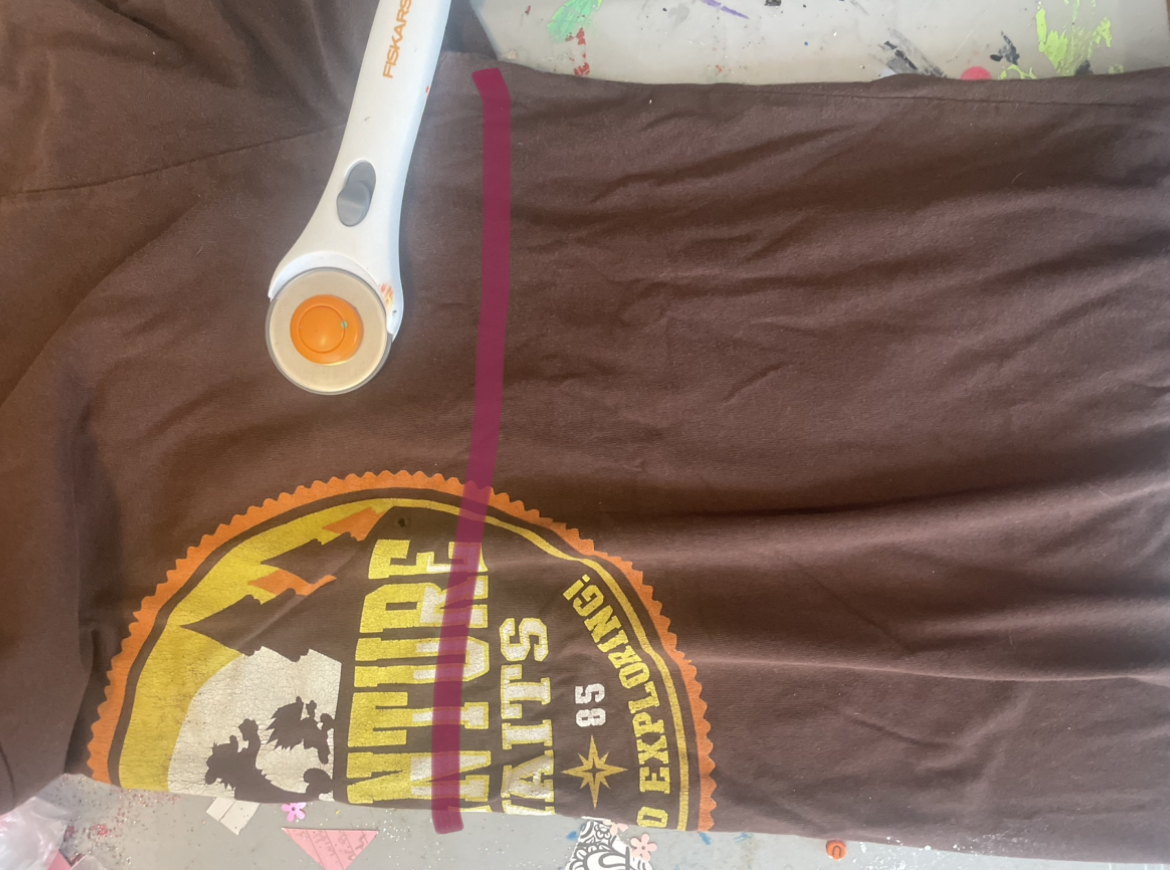
You want to cut roughly along this line, leaving you with just the armless trunk of the shirt.
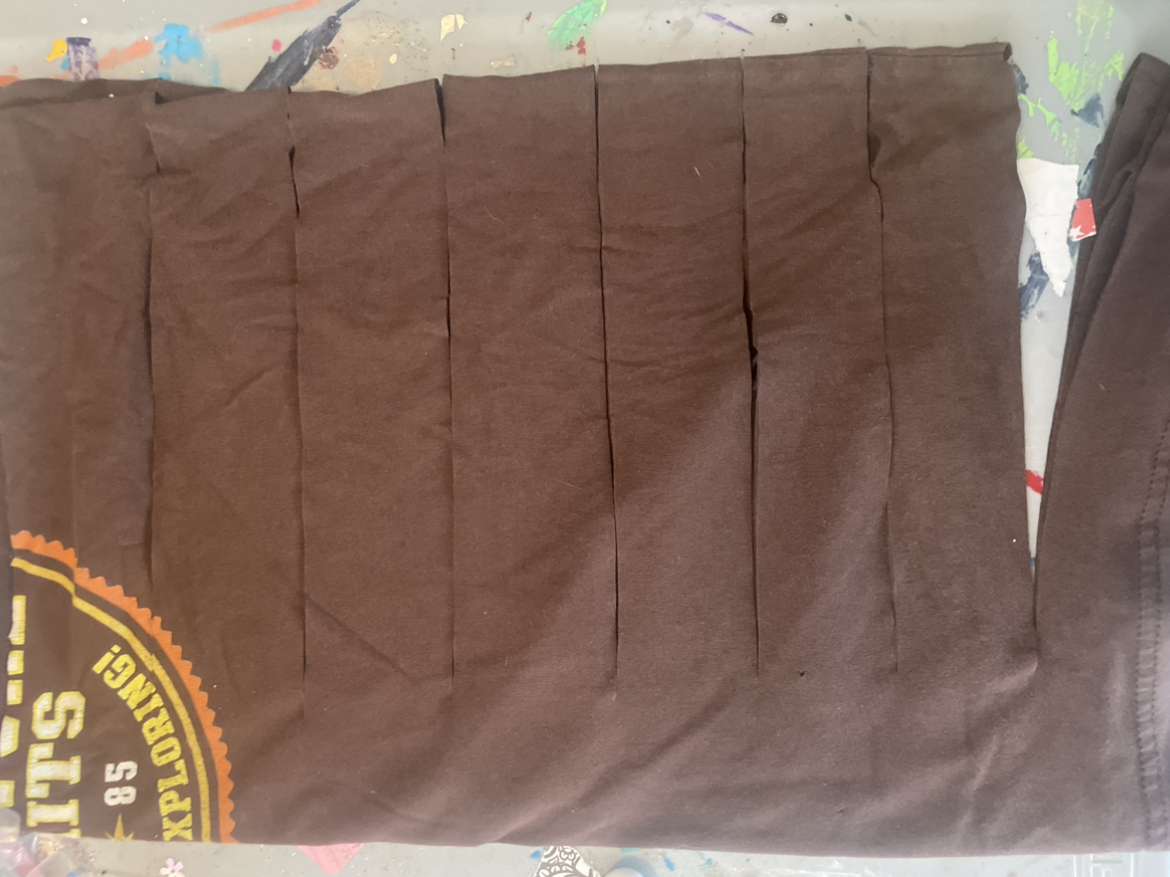
Cut on the side where the two ends meet (just to make it easy). You want 1.5” or so strips. Maybe 3-4 cm. Err on the side of thickness, to help it not snap during the stretching process later.

(Sorry for terrible lighting and the general chaos of the work area)
Then, put your arm through the truck to make it easier to start your cutting. You can start on either end, on one of the two sides where the “ribs” meet. Cut at an angle to meet your other cuts.
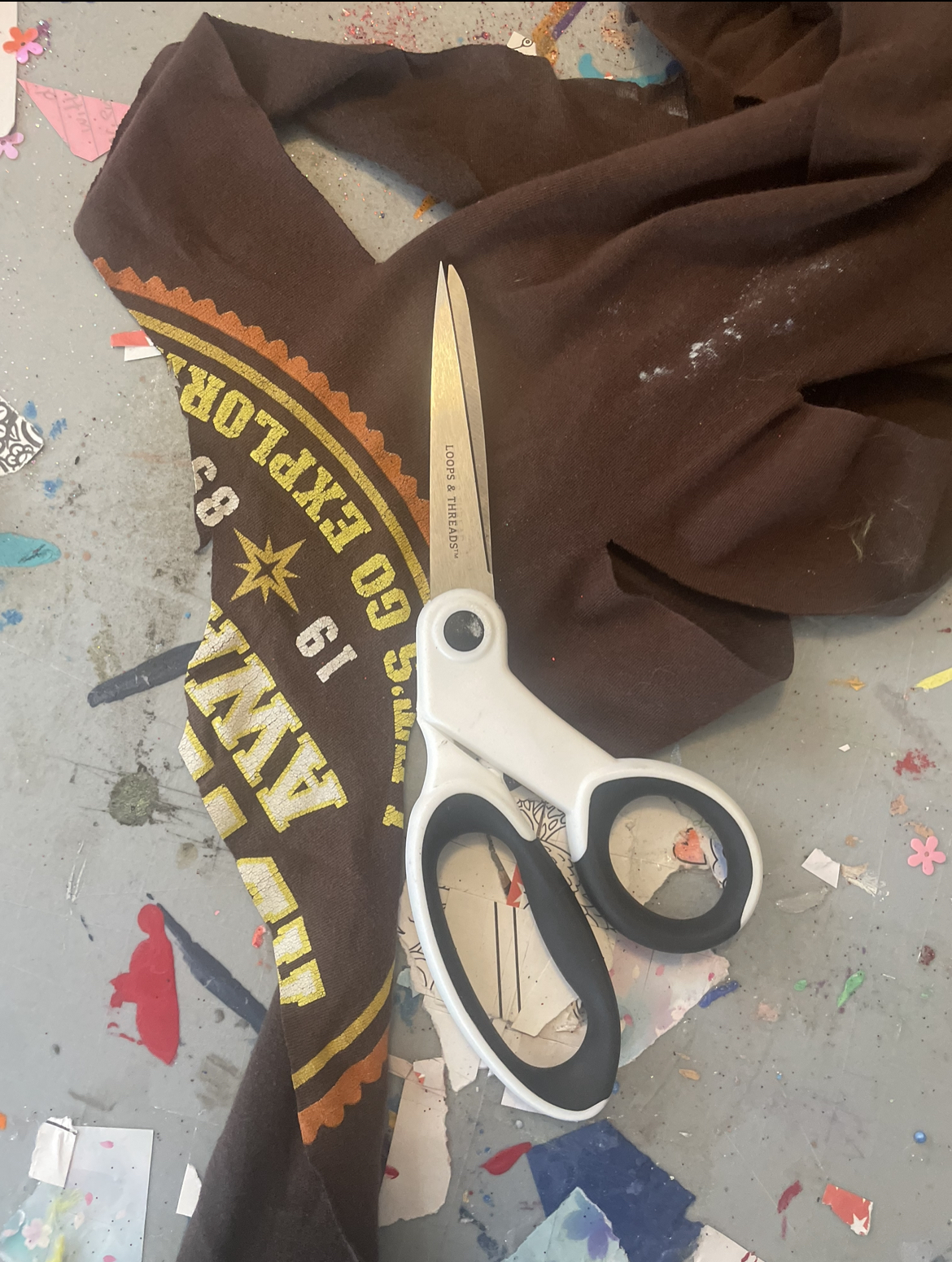
Keep cutting to make a continuous strip. On one side you’ll cut down at an angle to meet the next rib, on some sides you’ll cut straight. Try to keep the width of your strip sorta consistent, it’s not too big a deal though as long as it doesn’t get too thin.

Keep going around until you get to the final loop. Finish by cutting at an angle to get an unbroken length of t-shirt.
Find a post or other stable place to begin stretching the shirt around. I usually stretch holding maybe one - two feet of length on both sides. You don’t want to pull hard, and be especially gentle on thinner areas. The hems are usually safe to be pretty tough on - you want to hear them snap.
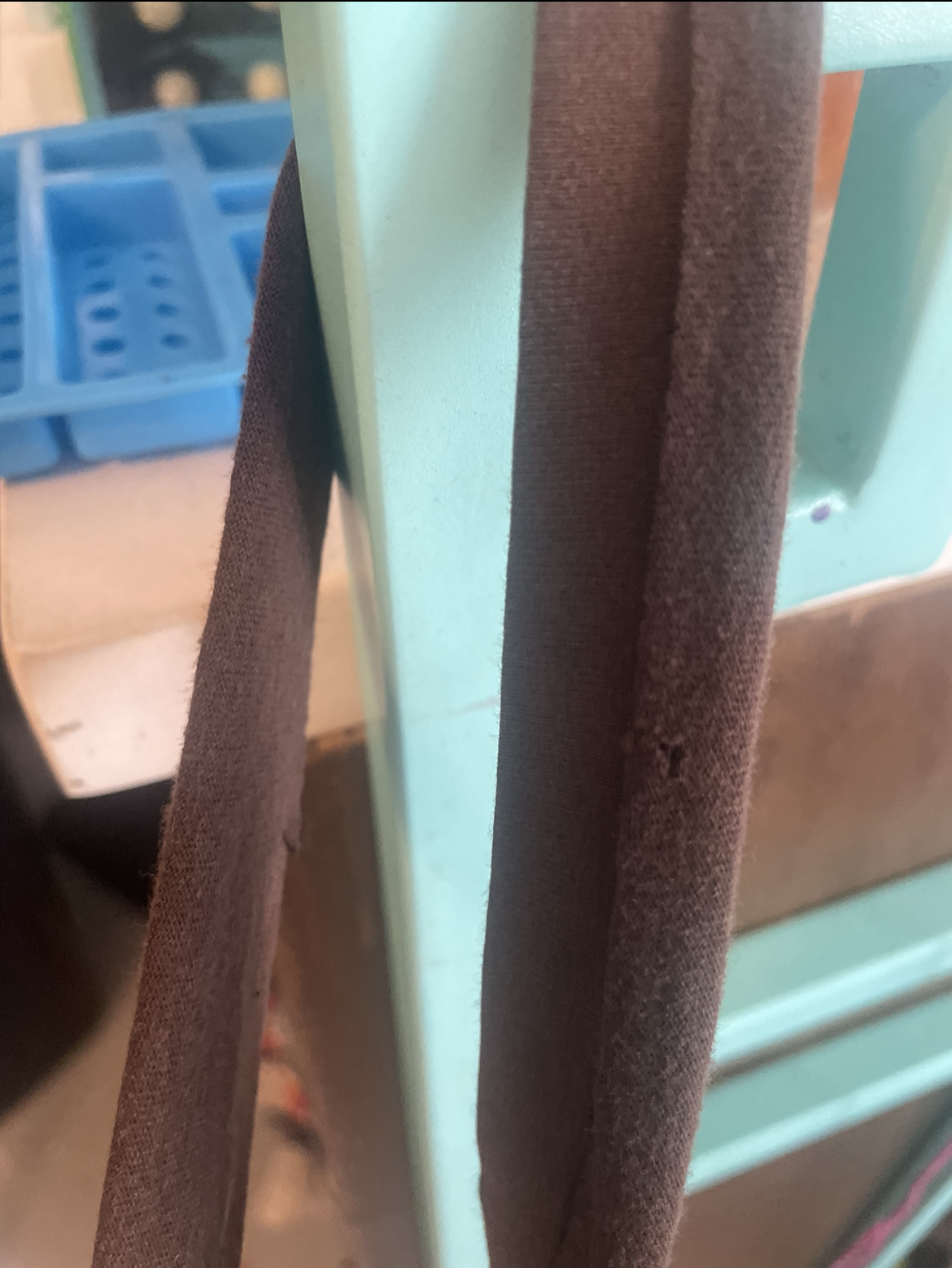
Once you’ve stretched the whole length, you can wrap it in a nice little ball of t-shirt yarn.
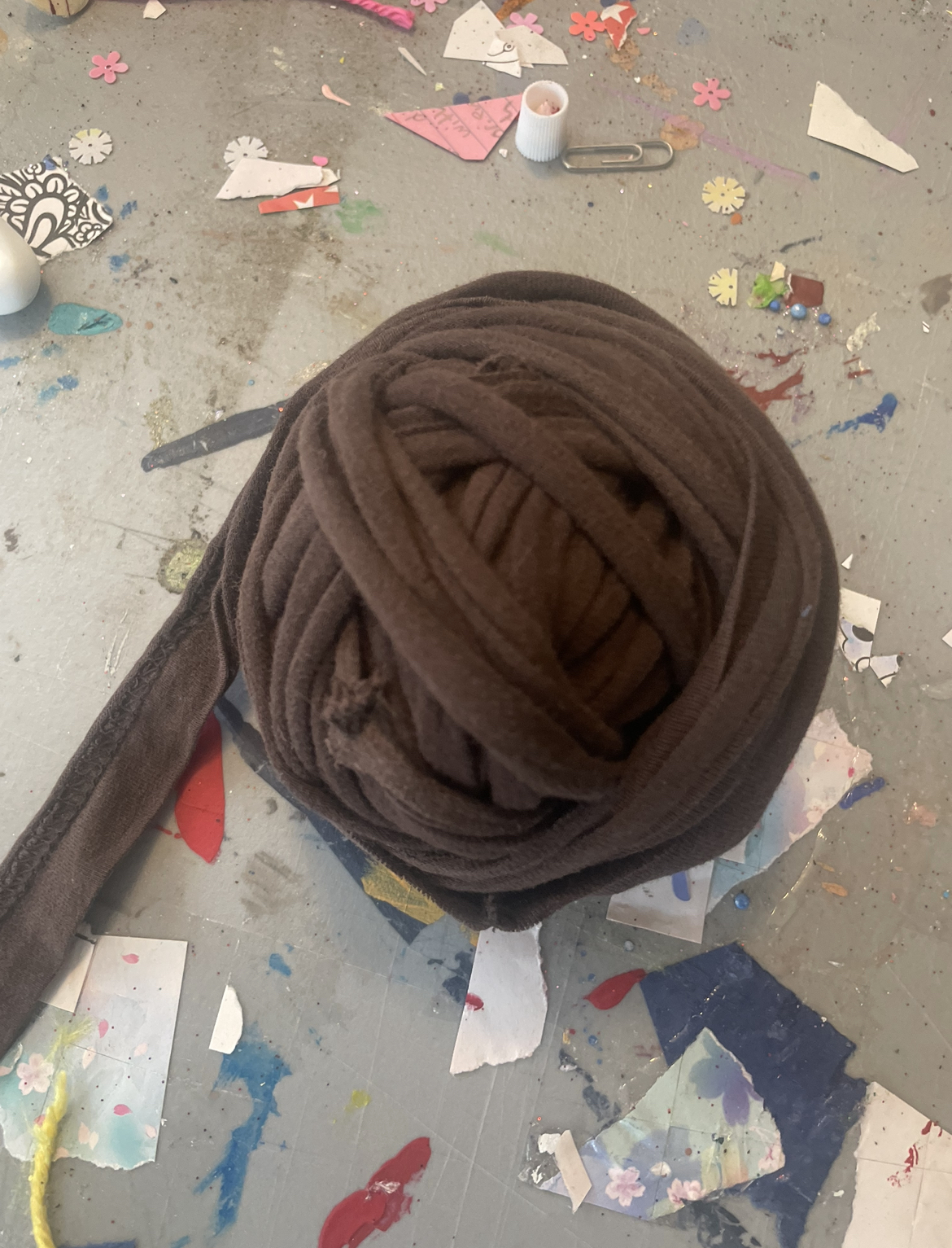
I knit mine to make quilt batting (you can use the leftover tops/interesting graphics as your backing or front). Somewhere in between size 11-15 needles is a good idea. Because of the weight of the yarn, circular needles are best. Crochet seems like it would be tough, but I suck at crochet anyway. If you accidentally break off small length or mess up your cutting process, it’s fine material to weave with or incorporate in mixed media. There‘s probably rag rug techniques that would work well with this too.
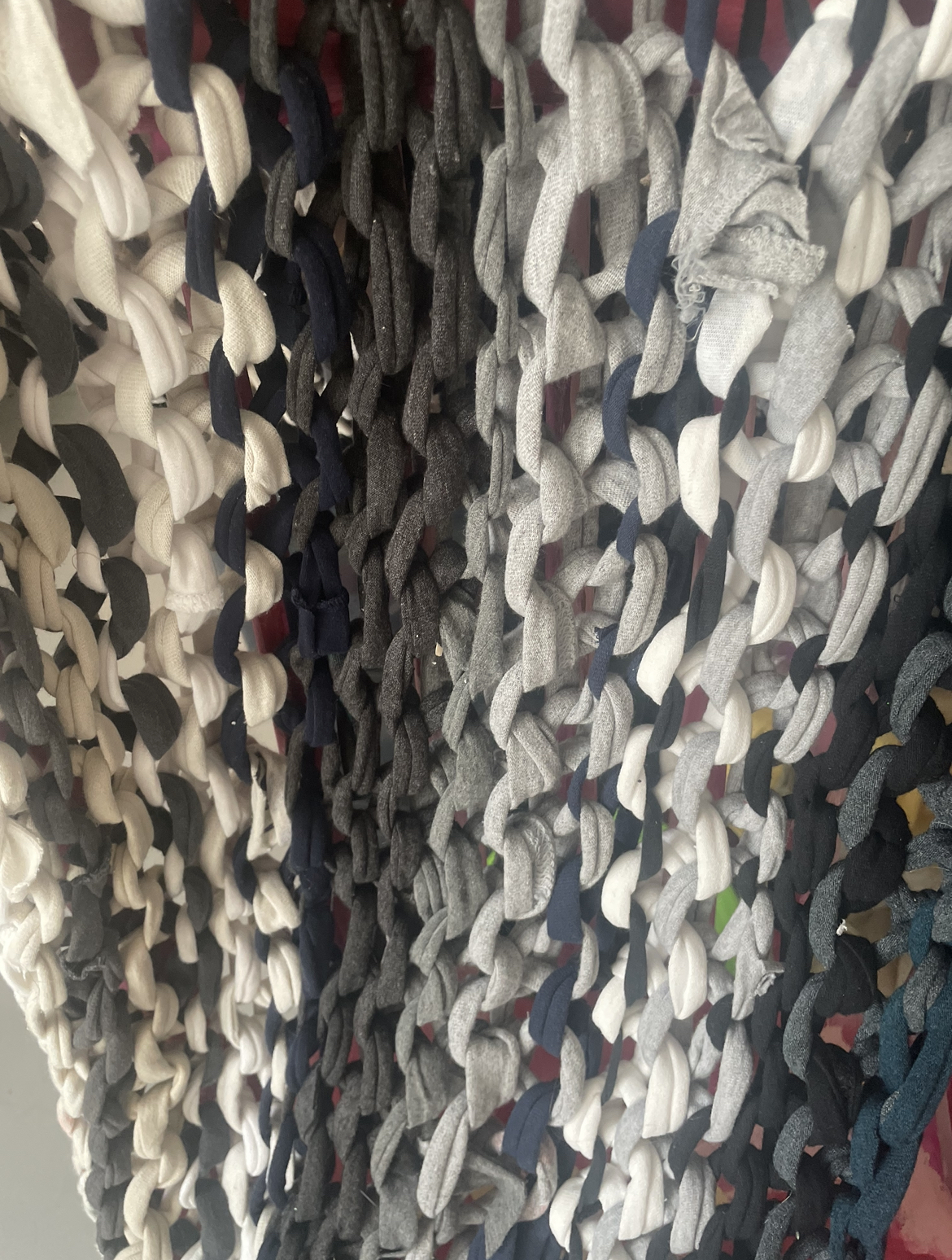
I think this is a great way to take advantage of the horrors of fast fashion/textile waste.
You can also modify this technique for plastic bags. You’ll just need to cut the bottom as well as the top, and consider the strength of the plastic when stretching. Walmart bags suck (use them carefully with an iron for laminating projects), but thicker plastics from bougier stores work fine.
